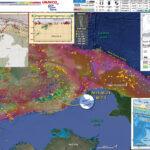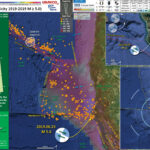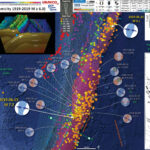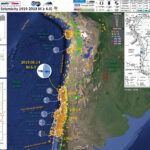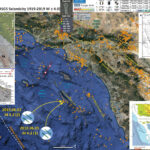I had been making an update to an earthquake report on a regionally experienced M 5.6 earthquake from coastal northern California when I noticed that there was a M 7.3 earthquake in eastern Indonesia. https://earthquake.usgs.gov/earthquakes/eventpage/us600044zz/executive This earthquake is in a…
Earthquake Report: Mendocino triple junction
Well, I was on the road for 1.5 days (work party for the Community Village at the Oregon Country Fair). As I was driving home, there was a magnitude M 5.6 earthquake in coastal northern California. https://earthquake.usgs.gov/earthquakes/eventpage/nc73201181/executive I didn’t realize…
Earthquake Report: Kermadec Trench
There was just an earthquake associated with the plate boundary that forms the Kermadec Trench, a deep oceanic trench that extends north from New Zealand, towards the Fiji Islands. https://earthquake.usgs.gov/earthquakes/eventpage/us6000417i/executive A minor tsunami (~25 cm in size) has been recorded…
Earthquake Report: Chile
This morning (my time) there was a magnitude M 6.4 earthquake offshore of Chile. While it was in the correct location to possibly cause a tsunami, the magnitude was too small. https://earthquake.usgs.gov/earthquakes/eventpage/us600040ja/executive The major plate boundary here is the megathrust…
Earthquake Report: San Clemente Island
Well, yesterday was the start of a sequence of earthquakes offshore of San Clemente Island, about 100 km west of San Diego, California. The primary tectonic player in southern CA is the Pacific – North America plate boundary fault, the…

